Salvia koyamae
JAPANESE YELLOW SAGE, WOODLAND SAGE
Family: Lamiaceae
Pronounced: SAL-vee-ah ko-YAM-aye
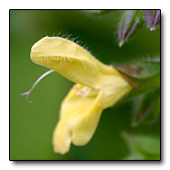
Quick Jumps
Growing Guide
Rainy Side Notes
GROWING GUIDE
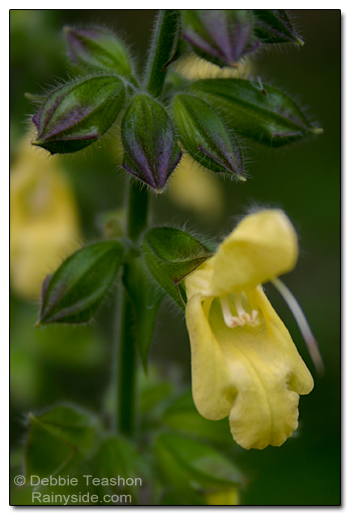
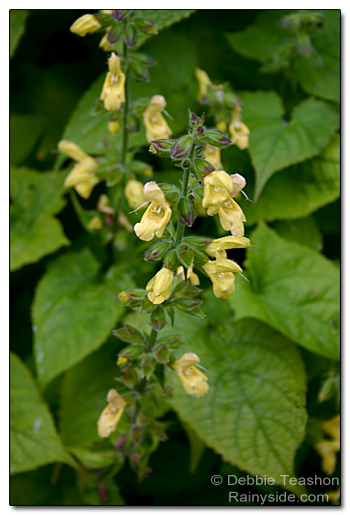
Origin:
Japan.
Plant Group:
Perennial.
Hardiness:
Sunset zones: Not listed.
USDA zones: 4b-10.
Mature size:
Height: 20-30 inches (50-60 cm).
Width: 18 inches (45 cm).
Flowering period:
Late summer to fall.
Flowering attributes:
Pale yellow flowers on spikes.
Leaf attributes:
Hairy, arrow-shaped (hastate), 6-inches long, and 5-inches wide, bright green leaves.
Growth habit:
Spreading.
Light:
Partial shade.
Soil:
Humus rich, fertile, well-drained, moist soil.
Feeding:
Side dress with compost. Fertilize in spring with a complete organic fertilizer.
Propagation Methods:
Divide in spring.
Softwood cuttings in spring.
Semi-ripe cuttings in late summer.
Rainy Side Notes
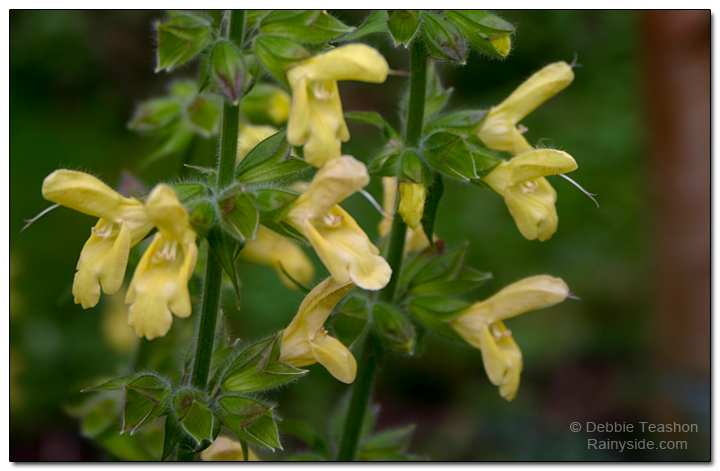
I usually don't think of sage plants growing in a shady woodland garden. This not-so-typical sage, Salvia koyamae, not only thrives in the shade but makes a beautiful ground cover with its bold, fuzzy, arrow-shaped foliage. Rarely found growing in the wild, the woodland sage is native to Honshu, the largest island in Japan.
Many salvias are drought tolerant, but this sage needs supplemental water during our drought.
Years after growing them under birch trees where they flourished, I am now trying them out in the shade of Douglas fir trees. They receive morning sun and some supplemental water. I am encouraged that the deer and bunnies ignore them. I will report back on how well they adjust to growing in a conifer forest.
The bright green foliage is the main reason I grow it. However, from late summer into fall, spikes of pale yellow flowers light up a shady area. Although you can place them in a full sun garden here in the Northwest, they grow better in partial shade, where they can spread out as a loose ground cover.
In winter, cover the crowns with a mulch of leaves for protection. In spring, protect new growth from slugs and snails.
Photographed in author's garden.
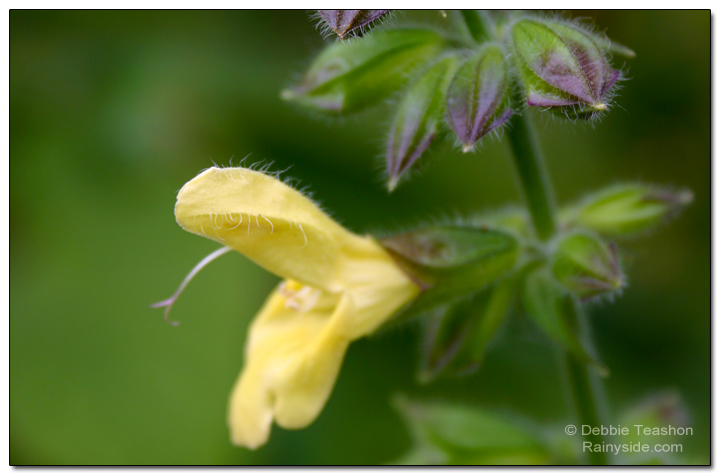

Gardening for the Homebrewer: Grow and Process Plants for Making Beer, Wine, Gruit, Cider, Perry, and More
By co-authors Debbie Teashon (Rainy Side Gardeners) and Wendy Tweton
Copyright Notice | Home | Search | Perennials

